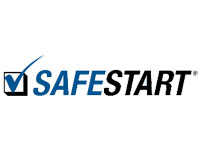Changing mindsets and behaviors towards safety is a key step in reducing hazards, injuries and human error on construction sites and beyond.
Most construction companies are aware that safety training is likely to save them money in the long run, in terms of the reduced downtime due to damaged equipment, serious injuries and stopped work. However, many do not realize that safety training can also reduce costly human errors that leads to delays, customers complaints, wastage and reworking.
Creating a safety culture that is acknowledged and embraced by all levels of employees is essential in the quest for a zero-injury work site. Without it, it will be an uphill battle to convince construction workers that they can go a year or more without a recordable injury.
To achieve zero injuries, everyone on site must accept a different level of safety than they would typically have for themselves after work. This is likely going to be more difficult in communities where the overall safety standards are almost non-existent and people are generally complacent with how things are done.
Achieving zero injuries can also be more challenging when there is a constant flux of subcontractors and equipment at different stages of a project. Each of these subcontractors may have a different culture or ‘normal’ way of doing things, and their workers may have their own set of beliefs that can be difficult and slow to change.
TRAIN THE SUPERVISORS
Hence, the supervisors who work for the general contractor must be trained on how to achieve a zero-injury culture and how to apply these concepts with the contractors—something which requires time, money, effort, and a willingness to change.
Safety professionals need to play a part in changing their own belief systems too. Many assume that as long as everybody follows the rules and wears the required personal protection equipment (PPE), nobody will get hurt. They have not yet considered unintentional at-risk behaviors, such as turning, moving or setting down their hands without looking first.
Safety professionals should also learn to use positive reinforcement and constructive feedback to educate and train workers about human factors and critical errors.
UNDERSTANDING HUMAN FACTORS
Having the right state of mind is essential in achieving a zero-injury workplace and culture. For workers to work safely, they must mediate human factors—such as rushing, frustration, fatigue and complacency—which can increase risks of injury or damage.
Most people do not recognise these human factors as high-risk states because they happen every day. They do not realize what these states do to your brain, how they cause critical errors and how they can compromise decision-making, especially if there is a deadline and the project is behind schedule.
For example, when a worker is rushing—going faster than what he is used to, as opposed to just going fast—it could cause his or her mind not to be on task and may result in a loss of balance, traction or grip.
Complacency is not a character flaw—it’s the way our brains are hardwired. For example, you would smell the chlorine as you approach a swimming pool but after an hour your brain has filtered it out and you won’t notice it anymore. So, if you’re used to seeing tripping hazards on site, you would probably cease to notice them after a while, until you actually trip over one of them.
Frustration and fatigue are something that most people deal with daily, both on and off the job. A lack of sleep, working overtime, an argument with a spouse, being late to work and many other situations, can cause us to take our eyes and mind off task and put us into the line of fire or cause a loss of balance, traction or grip. Being able to recognize these states on the fly is essential to ensuring focus on the task at hand.
TACKLING RESISTANCE TO CHANGE
Changing mindsets and behaviors are often met with resistance, even when those who need to implement them cognitively understand the benefits of the change. This is natural, and supervisors have to be trained on how to educate and coach their workers without getting frustrated.
What we see repeatedly is that when supervisors and workers understand the above human factors are significant potential risks, a culture shift occurs, and resistance decreases significantly. The organization will quickly have a common language around safety, realizing that rushing, frustration, fatigue and complacency cause critical errors such as eyes not on task, mind not on task, moving into or being in the line of fire or losing your balance, traction or grip.
COMMUNICATION
However, getting everyone on the same page is only the first step. The next step is training supervisors on how to engage the employees in meaningful conversations about these risks.
Supervisors need to know how to approach others and to ask the right kind of questions so the person can understand how their state of mind affects their behavior instead of taking any feedback personally.
For example, teaching supervisors how to use tools such as ‘rate your state’ would be more helpful than simply asking them to ‘talk to workers more often’. By asking employees to rate their level of rushing or their level of complacency from 1 to 10, supervisors can engage more effectively with workers.
Similarly, getting workers to anticipate where and when they could make a serious performance error that could waste a lot of time or money would also help to stimulate meaningful conversations.
If a worker rates himself at 6 or 7 for complacency, for instance, the supervisor could ask a simple question such as, “What is the worst mistake you could make when you’re a bit too comfortable or complacent on this job?”
You can also train workers on the best techniques for positive intervention if they see something unsafe, and train everybody on how to receive feedback graciously. For instance, if one employee sees another lifting an object that is heavy or awkward they could offer to assist with the lift, rather than pointing out that the person isn’t doing it correctly.
MAINTENANCE AND ENFORCEMENT
Discussing the right state of mind at work would be difficult, to say the least if safety equipment is not regularly inspected and properly maintained. The condition, use and enforcement of PPE is also important for preventing injuries and improving credibility when discussing human factors and critical errors.
For example, giving a driver a warning such as “Don’t speed because the truck needs new brakes” isn’t bad advice but it doesn’t convey a lot of concern for overall safety. First you should ensure the brakes and the rest of the truck are working properly and then advise the driver to drive safely and obey speed limits.
GOVERNMENT ROLE
When governments start increasing their enforcement efforts, companies react. As a result, companies tend to place more emphasis on compliance than injury reduction. Unfortunately, there comes a point where improved compliance no longer produces improved safety performance and fewer injuries, so governments need to improve their understanding of behavioral approaches to injury prevention. Instead of focusing on problematic companies, governments can also learn from how companies are achieving zero injuries and encouraging others to emulate them.
Governments also have to tackle one big challenge corruption which can easily come into play when companies that use inferior building materials or do not conform to fire or electrical safety standards do not get inspected, fined or shut down.
SAFETY EXCELLENCE
It is easy enough for companies that would normally strive for excellence in other areas, such as customer service or efficiency, to become so frustrated with the ‘burden of compliance’ that they do not pursue excellence in safety. This frustration usually manifests itself into a ‘good enough’ type of safety culture as opposed to a zero-injury culture.
Achieving a zero-injury culture is a huge paradigm shift for the construction industry. Just ask yourself if you believe, with everything you know about the construction industry, whether it’s really possible. There are so many unique challenges that other industries, such as mines, manufacturers or refineries don’t have to worry about. Those industries can afford to do training because they have a permanent workforce. But is that enough of a reason? We know that all accidental injuries are preventable, even those that happen at construction sites. So, just because something is more difficult to organize doesn’t mean it’s impossible. It just means that it’s more difficult. But it’s still a lot less work and a lot less money than having to deal with severe incidents and injuries caused by rushing, frustration, fatigue and complacency.
About SafeStart
SafeStart is an advanced safety awareness and skills development programme that aims to help people avoid unintentional mistakes that lead to injury. It has helped thousands of companies in over 60 countries move beyond compliance and beyond the workplace to improve employee engagement, culture, family safety and business results. It has been successfully implemented in more than 3,500 companies worldwide, with over 4,5 million people trained in more than 30 different languages.
ABOUT THE AUTHOR
Larry Wilson, SafeStart Author and CEO
Larry Wilson is a pioneer in the area of Human Factors in safety. He has been a behaviour-based safety consultant for over 25 years and has worked on-site with hundreds of companies worldwide. He is also the author of SafeStart, an advanced safety and performance awareness program, successfully implemented in more than 3,500 companies, in over 60 countries, with more than 4,5 million people trained.
He has published hundreds of articles in magazines around the world and is co-author of the book “Inside Out: Rethinking Traditional Safety Management Paradigms” and author of the book “Defenseless Moments: a different perspective on serious injuries”. Larry is a renowned international speaker and is a regular guest at events throughout the year.

For more information
Location: https://g.page/SafeStart-International?share
Tel : +91 44 42321920
Mail: asia@ssi.safestart.com /
Web: http://asia.safestart.com

